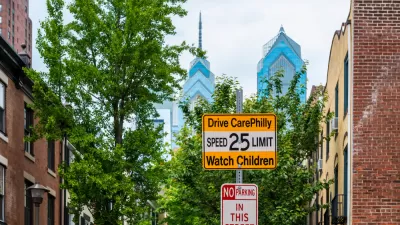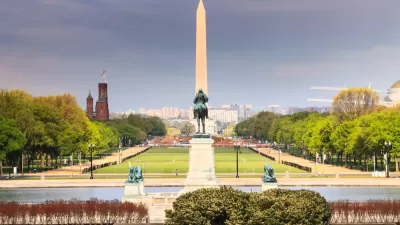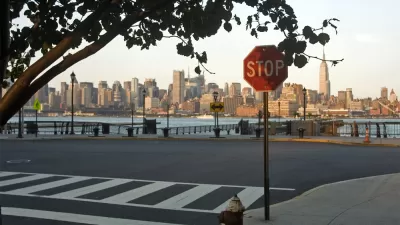Speed limits are currently determined by a calculation that considers only the status quo of vehicular velocity. Standard practices for speed limit setting and legislators should prioritize the safety of community members, according to this article.

Tiffany Chu, founder of transportation company Remix, asserts that American we need to rethink the way we set speed limits in the United States. While transportation laymen may hope that speed limits are set by a calculation determining the safest rules for traveling by car in a given space, the reality it that safety considerations are simply not a part of the calculation. Instead, says Chu, speed limits are set "by the speed at or below which 85 percent of the motorists drive on a given road, an outdated guideline promoted by the Federal Highway Administration (FHWA)."
Chu reminds that speeding has played a part in about a third of traffic collision fatalities in the United States over the past two decades and that, given these statistics, government agencies need to revise the methods for setting speed limits and introduce speed-reducing street design mechanisms on busy roadways.
For Chu, design is at the center of the solution, pointing to a July report released by the National Association of City Transportation Officials (NACTO), which advocates for speed limits set by criteria like density and activity level in addition to designing slow zones. "We cannot usher in a multimodal future without lowering speeds and making streets safe for all users. We must support the work of those undoing harmful legacy methods, and encourage the adoption of policies that embrace and emphasize design," advises Chu.
FULL STORY: Why Slower Commutes Can Be A Good Thing

Planetizen Federal Action Tracker
A weekly monitor of how Trump’s orders and actions are impacting planners and planning in America.

Maui's Vacation Rental Debate Turns Ugly
Verbal attacks, misinformation campaigns and fistfights plague a high-stakes debate to convert thousands of vacation rentals into long-term housing.

San Francisco Suspends Traffic Calming Amidst Record Deaths
Citing “a challenging fiscal landscape,” the city will cease the program on the heels of 42 traffic deaths, including 24 pedestrians.

Amtrak Rolls Out New Orleans to Alabama “Mardi Gras” Train
The new service will operate morning and evening departures between Mobile and New Orleans.

The Subversive Car-Free Guide to Trump's Great American Road Trip
Car-free ways to access Chicagoland’s best tourist attractions.

San Antonio and Austin are Fusing Into one Massive Megaregion
The region spanning the two central Texas cities is growing fast, posing challenges for local infrastructure and water supplies.
Urban Design for Planners 1: Software Tools
This six-course series explores essential urban design concepts using open source software and equips planners with the tools they need to participate fully in the urban design process.
Planning for Universal Design
Learn the tools for implementing Universal Design in planning regulations.
Heyer Gruel & Associates PA
JM Goldson LLC
Custer County Colorado
City of Camden Redevelopment Agency
City of Astoria
Transportation Research & Education Center (TREC) at Portland State University
Jefferson Parish Government
Camden Redevelopment Agency
City of Claremont





























